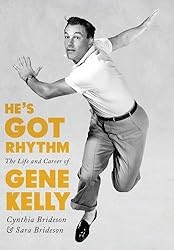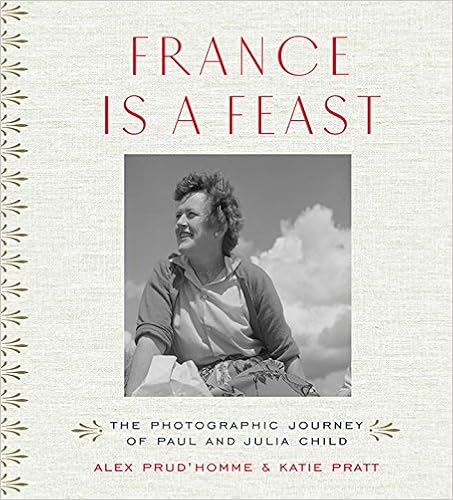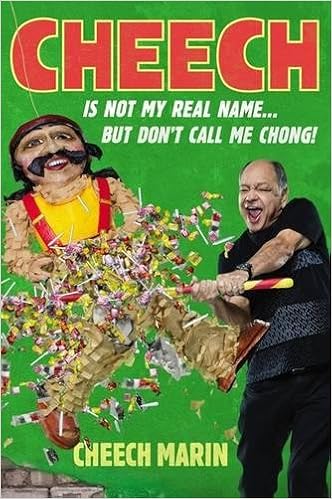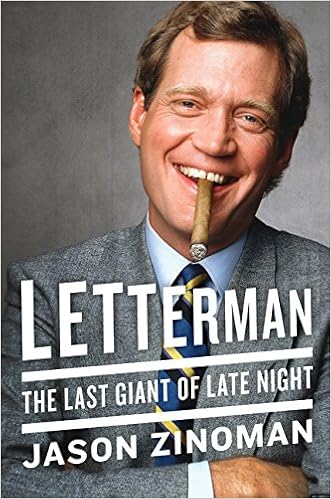The “Screen Classics” series published by the University Press of Kentucky continues to amaze, entertain and dazzle us. TK new books for 2017:
♥ Harry Langdon: King of Silent Comedy ($40) Among silent film comedians, three names stand out―Charlie Chaplin, Buster Keaton, and Harold Lloyd―but Langdon indisputably deserves to sit among them as the fourth “king.”  Langdon parlayed his pantomime talents, expressive eyes and childlike innocence into silent-era stardom. This in-depth biography, which features behind-the-scenes accounts and personal recollections compiled by Langdon’s late wife, Mabel, provides a full and thoughtful picture of this multifaceted entertainer and his meteoric rise and fall. Featuring never-before-published stories and photos from his immediate family, this biography is a fascinating and revealing look at an unsung silent film giant.
Langdon parlayed his pantomime talents, expressive eyes and childlike innocence into silent-era stardom. This in-depth biography, which features behind-the-scenes accounts and personal recollections compiled by Langdon’s late wife, Mabel, provides a full and thoughtful picture of this multifaceted entertainer and his meteoric rise and fall. Featuring never-before-published stories and photos from his immediate family, this biography is a fascinating and revealing look at an unsung silent film giant.
♥ He’s Got Rhythm: The Life and Career of Gene Kelly ($39.95) A would-be baseball player and one-time law student, Kelly captured the nation’s imagination in so many great flicks. In the first written since the star’s death, authors Cynthia Brideson and Sara Brideson disclose new details of Kelly’s complex life.  Not only do they examine his contributions to the world of entertainment in depth, but they also consider his political activities―including his opposition to the Hollywood blacklist. The authors even confront Kelly’s darker side and explore his notorious competitive streak, his tendency to be a taskmaster on set and his multiple marriages.
Not only do they examine his contributions to the world of entertainment in depth, but they also consider his political activities―including his opposition to the Hollywood blacklist. The authors even confront Kelly’s darker side and explore his notorious competitive streak, his tendency to be a taskmaster on set and his multiple marriages.
♥ Anne Bancroft: A Life ($34.95) In the first biography to cover the entire scope of Bancroft’s life and career, Douglass K. Daniel brings together interviews with dozens of her friends and colleagues, never-before-published family photos, and material from film and theater archives to present a portrait of an artist who raised the standards of acting for all those who followed.  Daniel reveals how, from a young age, Bancroft was committed to challenging herself and strengthening her craft. The book offers new insights into the life and career of a determined actress who left an indelible mark on the film industry while remaining true to her art.
Daniel reveals how, from a young age, Bancroft was committed to challenging herself and strengthening her craft. The book offers new insights into the life and career of a determined actress who left an indelible mark on the film industry while remaining true to her art.
♥ Barbara La Marr: The Girl Who Was Too Beautiful for Hollywood ($45) . When she was 17, La Marr’s behavior in Los Angeles nightclubs caused law enforcement to declare her “too beautiful” to be on her own in the city, and she was ordered to leave. When La Marr returned to Hollywood years later, her loveliness and raw talent caught the attention of producers and catapulted her to movie stardom. In five years, La Marr appeared in twenty-six films, yet by 1925―finding herself beset by numerous scandals, several failed marriages, a hidden pregnancy and personal prejudice based on her onscreen persona―she fell out of public favor. When she was diagnosed with a fatal lung condition, she continued to work, undeterred, until she collapsed on set. She died at the age of 29. Drawing on never-before-released diary entries, correspondence, and creative works, Sherri Snyder’s biography offers a valuable perspective on her contributions to silent-era Hollywood and the cinematic arts.
When she was diagnosed with a fatal lung condition, she continued to work, undeterred, until she collapsed on set. She died at the age of 29. Drawing on never-before-released diary entries, correspondence, and creative works, Sherri Snyder’s biography offers a valuable perspective on her contributions to silent-era Hollywood and the cinematic arts.
♥ You Ain’t Heard Nothin’ Yet: Interviews with Stars from Hollywood’s Golden Era ($36.95) Journalists James Bawden and Ron Miller spent their careers interviewing the greatest stars of Hollywood’s golden age. They visited Lee Marvin at home and politely admired his fishing trophies, chatted with Janet Leigh while a young Jamie Lee Curtis played, even made Elizabeth Taylor laugh out loud in a seven-minute chat. The book is filled with humorous anecdotes and incredible behind-the-scenes stories.  Bette Davis reflects that she and Katharine Hepburn were both considered for the role of Scarlett O’Hara but neither was “gorgeous enough” for the part; Janet Leigh analyzes the famous shower scene in Psycho, which was shot in seven days and gave the actress nightmares for years; and Jimmy Stewart describes Alfred Hitchcock as a “strange, roly-poly man, interested only in blondes and murder.”
Bette Davis reflects that she and Katharine Hepburn were both considered for the role of Scarlett O’Hara but neither was “gorgeous enough” for the part; Janet Leigh analyzes the famous shower scene in Psycho, which was shot in seven days and gave the actress nightmares for years; and Jimmy Stewart describes Alfred Hitchcock as a “strange, roly-poly man, interested only in blondes and murder.”
We have always been a fan of Julia Child. We are in love with France is a Feast (Thames & Hudson, $35), a volume of 250 intimate and compelling photographs taken by her husband Paul Child, a gifted photographer, that documents how Julia Child first discovered French cooking and the French way of life. Their wanderings through the French capital and countryside, frequently photographed by Paul, would help lead to the classic Mastering the Art of French Cooking, and Julia’s celebrated career in books and on television.  Though Paul was an accomplished photographer (his work is in the collection of the Museum of Modern Art), his photographs remained out of the public eye until the publication of Julia’s memoir, My Life in France, in which several of his images were included. Now, with these photos and personal stories recounted by his great-nephew Alex Prud’homme, France is a Feast not only captures this magical period in Paul and Julia’s lives, but also brings to light Paul Child’s own remarkable photographic achievement. Merveilleux!
Though Paul was an accomplished photographer (his work is in the collection of the Museum of Modern Art), his photographs remained out of the public eye until the publication of Julia’s memoir, My Life in France, in which several of his images were included. Now, with these photos and personal stories recounted by his great-nephew Alex Prud’homme, France is a Feast not only captures this magical period in Paul and Julia’s lives, but also brings to light Paul Child’s own remarkable photographic achievement. Merveilleux!
Tina Brown kept delicious daily diaries throughout her eight spectacular years as editor-in-chief of Vanity Fair. The pithy memoir-filled The Vanity Fair Diaries: 1983-1992 (Henry Holt, $32) offer an incendiary portrait of the flash and dash and power brokering of the Excessive Eighties in New York and Hollywood. She was a woman of relentless drive and ambition; with a mere swipe of her pens (or compUter keys), she can stab the knife and twist it.  Here are the inside stories of Vanity Fair scoops and covers that sold millions―the Reagan kiss, the meltdown of Princess Diana’s marriage to Prince Charles, the sensational Annie Leibovitz cover of a gloriously pregnant, naked Demi Moore. They are as acerbic as they are astute, even mean-spirited. Who else can recall mega-agent Swifty Lazar as “tiny and bald and hairy in the wrong places”? Or socialite Betsy Bloomingdale as someone who “has the wind-tunnel look of a recent face-lift”? Diss-light!
Here are the inside stories of Vanity Fair scoops and covers that sold millions―the Reagan kiss, the meltdown of Princess Diana’s marriage to Prince Charles, the sensational Annie Leibovitz cover of a gloriously pregnant, naked Demi Moore. They are as acerbic as they are astute, even mean-spirited. Who else can recall mega-agent Swifty Lazar as “tiny and bald and hairy in the wrong places”? Or socialite Betsy Bloomingdale as someone who “has the wind-tunnel look of a recent face-lift”? Diss-light!
In the early 1930s, during the worst drought and financial depression in American history, Sam Babb recruited talented, hardworking young women and offered them a chance at a better life: A free college education in exchange for playing on his basketball team, the Cardinals. Despite their fears of leaving home and the sacrifices that their families would face, the women joined the team. And as Babb coached the Cardinals, something extraordinary happened. These remarkable athletes found a passion for the game and a heartfelt loyalty to one another and their coach. And they began to win. Dust Bowl Girls: The Inspiring Story of the Team That Barnstormed Its Way to Basketball Glory (Algonquin Books, $16.95) takes readers on the Cardinals’ intense, improbable journey all the way to an epic showdown with the prevailing national champions, helmed by the legendary Babe Didrikson.
These remarkable athletes found a passion for the game and a heartfelt loyalty to one another and their coach. And they began to win. Dust Bowl Girls: The Inspiring Story of the Team That Barnstormed Its Way to Basketball Glory (Algonquin Books, $16.95) takes readers on the Cardinals’ intense, improbable journey all the way to an epic showdown with the prevailing national champions, helmed by the legendary Babe Didrikson.
Those who knew Sid Luft, the producer and third husband of Judy Garland, knew he was an ego maniac who emotional abused his wife. In Judy and I: My Life With Judy Garland ( Chicago review Press, $30), he proves he has no filter when it comes to talking about women: Judy’s mother is “fat and dumpy”; Judy’s sisters are “ugly”; and Judy was a “helium head” since her face was so fat. because her face was so fat. Yet he produced A Star is Born and fought to keep her sober and drug-free. We enjoyed the book, even if he doesn’t get into their marriage until half-way through the pages. There are nice touches (she didn’t use nail polish) and Judy fans will relish the book. Maybe.
Chicago review Press, $30), he proves he has no filter when it comes to talking about women: Judy’s mother is “fat and dumpy”; Judy’s sisters are “ugly”; and Judy was a “helium head” since her face was so fat. because her face was so fat. Yet he produced A Star is Born and fought to keep her sober and drug-free. We enjoyed the book, even if he doesn’t get into their marriage until half-way through the pages. There are nice touches (she didn’t use nail polish) and Judy fans will relish the book. Maybe.
 became the face of the recreational drug movement with the film Up in Smoke, forged a successful solo career with roles in The Lion King and, more recently, Jane the Virgin, and became the owner of the most renowned collection of Chicano art in the world. Written in Cheech’s uniquely hilarious voice, this memoir (do we dare?) will take you to new highs
became the face of the recreational drug movement with the film Up in Smoke, forged a successful solo career with roles in The Lion King and, more recently, Jane the Virgin, and became the owner of the most renowned collection of Chicano art in the world. Written in Cheech’s uniquely hilarious voice, this memoir (do we dare?) will take you to new highsIn a career spanning more than 30 years, David Letterman redefined the modern talk show with an ironic comic style that transcended traditional television. While he remains one of the most famous stars in America, he is a remote, even reclusive, figure whose career is widely misunderstood. In Letterman: The Last Giant of Late Night (Harper, $28.99), Jason Zinoman, the first comedy critic in the history of the New York Times, mixes groundbreaking reporting with unprecedented access and probing critical analysis to explain the unique entertainer’s titanic legacy. Moving from his early days in Indiana to his retirement, Zinoman goes behind the scenes of Letterman’s television career to illuminate the origins of his revolutionary comedy, its overlooked influences, and how his work intersects with and reveals his famously eccentric personality.
Moving from his early days in Indiana to his retirement, Zinoman goes behind the scenes of Letterman’s television career to illuminate the origins of his revolutionary comedy, its overlooked influences, and how his work intersects with and reveals his famously eccentric personality.
In the wake of rape allegations made against director and actor Nate Parker, Gabrielle Union—a 44-year-old actress who launched her career with roles in iconic ’90s movies—instantly became the insightful, outspoken actress that Hollywood has been desperately awaiting. With honesty and heartbreaking wisdom, she revealed her own trauma as a victim of sexual assault: “It is for you that I am speaking. This is real. We are real.” ![We're Going to Need More Wine: Stories That Are Funny, Complicated, and True by [Union, Gabrielle]](https://images-na.ssl-images-amazon.com/images/I/51SM2a8-miL.jpg) We’re Going to Need More Wine: Stories That Are Funny, Complicated and True (Dey Street Books, $26.99) is a collection of thought-provoking essays infused with her unique wisdom and deep humor; Union uses that same fearlessness to tell astonishingly personal and true stories about power, color, gender, feminism and fame as she bravely lays herself bare.
We’re Going to Need More Wine: Stories That Are Funny, Complicated and True (Dey Street Books, $26.99) is a collection of thought-provoking essays infused with her unique wisdom and deep humor; Union uses that same fearlessness to tell astonishingly personal and true stories about power, color, gender, feminism and fame as she bravely lays herself bare.
We hate him. So does most of America. So does Katy Tur. Called “disgraceful,” “third-rate,” and “not nice” by Arnold Frump, the NBC News correspondent reported on—and took flak from—the most captivating and volatile presidential candidate in American history. She lived out of a suitcase for a year and a half, following Frump around the country, powered by packets of peanut butter and kept clean with dry shampoo. She visited 40 states with the candidate, made more than 3,800 live television reports, and tried to endure a gazillion loops of Elton John’s “Tiny Dancer”—a Frump rally playlist staple. From day 1 to day 500, Tur documented Trump’s inconsistencies, fact-checked his falsities and called him out on his lies. In return, Trump repeatedly singled Tur out. He tried to charm her, intimidate her and shame her. At one point, he got a crowd so riled up against Tur, Secret Service agents had to walk her to her car. None of it worked. Facts are stubborn. So was Tur. She was part of the first women-led politics team in the history of network news. Unbelievable: My Front-Row Seat to the Craziest Campaign in American History (Dey Street Books, $26.99) is her darkly comic, fascinatingly bizarre, and often scary story of how America sent a former reality show host to the White House. It’s also the story of what it was like for Tur to be there as it happened, inside a no-rules world where reporters were spat on, demeaned and discredited. Impeach the asshole NOW.
In return, Trump repeatedly singled Tur out. He tried to charm her, intimidate her and shame her. At one point, he got a crowd so riled up against Tur, Secret Service agents had to walk her to her car. None of it worked. Facts are stubborn. So was Tur. She was part of the first women-led politics team in the history of network news. Unbelievable: My Front-Row Seat to the Craziest Campaign in American History (Dey Street Books, $26.99) is her darkly comic, fascinatingly bizarre, and often scary story of how America sent a former reality show host to the White House. It’s also the story of what it was like for Tur to be there as it happened, inside a no-rules world where reporters were spat on, demeaned and discredited. Impeach the asshole NOW.
In November of 1954 a young woman dressed plainly in a white oxford, dark sunglasses and a black pageboy wig boards a midnight flight from Los Angeles to New York. As the plane’s engines rev she breathes a sigh of relief, lights a cigarette and slips off her wig revealing a tangle of fluffy blonde curls. Marilyn Monroe was leaving Hollywood behind, and along with it a failed marriage and a frustrating career. She needed a break from the scrutiny and insanity of LA. She needed Manhattan. In Manhattan, the most famous woman in the world can wander the streets unbothered, spend hours at the Met getting lost in art, and afternoons buried in the stacks of the Strand.  Marilyn begins to live a life of the mind in New York; she dates Arthur Miller, dances with Truman Capote and drinks with Carson McCullers. Even though she had never lived there before, in New York, Marilyn is home. A true love letter to Marilyn, and a joyous portrait of a city bursting with life and art, Marilyn in Manhattan: Her Year of Joy (Flatiron Books, $27.99) is a lively look at two American treasures: New York and Marilyn Monroe, and sheds new light on one of our most enduring icons.
Marilyn begins to live a life of the mind in New York; she dates Arthur Miller, dances with Truman Capote and drinks with Carson McCullers. Even though she had never lived there before, in New York, Marilyn is home. A true love letter to Marilyn, and a joyous portrait of a city bursting with life and art, Marilyn in Manhattan: Her Year of Joy (Flatiron Books, $27.99) is a lively look at two American treasures: New York and Marilyn Monroe, and sheds new light on one of our most enduring icons.
Bunny Mellon, who died in 2014 at age 103, was press-shy during her lifetime. But with the co-operation of Bunny Mellon’s family, author Meryl Gordon received access to thousands of pages of her letters, diaries and appointment calendars and has interviewed more than 175 people to capture the spirit of this talented American original in Bunny Mellon: The Life of an American Style Legend (Grand Central Publishing, $28).  Whoever knew the life story of a style icon and American aristocrat who designed the White House Rose Garden for her friend JFK and served as a living witness to 20th Century American history could be so riveting?
Whoever knew the life story of a style icon and American aristocrat who designed the White House Rose Garden for her friend JFK and served as a living witness to 20th Century American history could be so riveting?
Fred Hersch’s prodigious talent as a sideman—a pianist who played with the giants of the twentieth century in the autumn of their careers, including Art Farmer and Joe Henderson—blossomed further in the ’80s and beyond into a compositional genius that defied the boundaries of bop, sweeping in elements of pop, classical, and folk to create a wholly new music. Good Things Happen Slowly: A Life in and Out of Jazz (Crown Archetype , $28) is his memoir. It’s the story of the first openly gay, HIV-positive jazz player; a deep look into the cloistered jazz culture that made such a status both transgressive and groundbreaking; and a profound exploration of how Hersch’s two-month-long coma in 2007 led to his creating some of the finest, most direct, and most emotionally compelling music of his career.
Good Things Happen Slowly: A Life in and Out of Jazz (Crown Archetype , $28) is his memoir. It’s the story of the first openly gay, HIV-positive jazz player; a deep look into the cloistered jazz culture that made such a status both transgressive and groundbreaking; and a profound exploration of how Hersch’s two-month-long coma in 2007 led to his creating some of the finest, most direct, and most emotionally compelling music of his career.
Millions of readers of Little House on the Prairie believe they know Laura Ingalls―the pioneer girl who survived blizzards and near-starvation on the Great Plains, and the woman who wrote the famous autobiographical books. But the true saga of her life has never been fully told. Now, drawing on unpublished manuscripts, letters, diaries, and land and financial records, Caroline Fraser masterfully fills in the gaps in Prairie Fires: The American Dreams of Laura Ingalls Wilder (Metropolitan Books, $35) Wilder’s biography. Revealing the grown-up story behind the most influential childhood epic of pioneer life, she also chronicles Wilder’s tumultuous relationship with her journalist daughter, Rose Wilder Lane, setting the record straight regarding charges of ghostwriting that have swirled around the books.
Wilder’s biography. Revealing the grown-up story behind the most influential childhood epic of pioneer life, she also chronicles Wilder’s tumultuous relationship with her journalist daughter, Rose Wilder Lane, setting the record straight regarding charges of ghostwriting that have swirled around the books.
A perfect companion: In Caroline: Little House, Revisited (William Morrow, $25.99), Sarah Miller vividly recreates the beauty, hardship and joys of the frontier in a dazzling work of historical fiction that was authorized by Little House Heritage Trust. It’s a captivating story that illuminates one courageous, resilient and loving pioneer woman as never before:  Caroline Ingalls, “Ma” in Laura Ingalls Wilder’s beloved Little House books. For more than eighty years, generations of readers have been enchanted by the adventures of the American frontier’s most famous child, Laura Ingalls Wilder, in the Little House books. Now, that familiar story is retold in this captivating tale of family, fidelity, hardship, love, and survival that vividly reimagines our past.
Caroline Ingalls, “Ma” in Laura Ingalls Wilder’s beloved Little House books. For more than eighty years, generations of readers have been enchanted by the adventures of the American frontier’s most famous child, Laura Ingalls Wilder, in the Little House books. Now, that familiar story is retold in this captivating tale of family, fidelity, hardship, love, and survival that vividly reimagines our past.
4 from university
